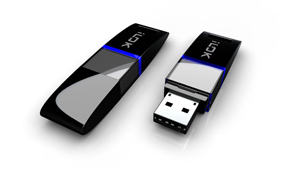Antares Autotune Efx 3 Torrent

Sep 18, 2018 - Download Antares Auto-Tune EFX for free. Antares Auto-Tune EFX - Auto-Tune EFX 3 is a simple tool for real-time pitch correction and creation. The Antares Auto-Tune EFX 3 software. Auto-Tune EFX 3 is designed to work with a wide variety of digital audio applications.
Real-Time Pitch Correction and Auto-Tune Vocal Effect Powered by the same core technology as Antares' professional standard Auto-Tune 7, Auto-Tune EFX 3 is the quickest, easiest-to-use tool for real-time pitch correction and creating the iconic Auto-Tune Vocal Effect. Auto-Tune EFX 3’s new variable Retune Speed and Humanize controls provide an entirely new level of natural, realistic pitch correction. And with our unique Auto-Motion Vocal Pattern Generation, stunning new vocal effects are only a mouse click away. Like Auto-Tune 7, Auto-Tune EFX 3's pitch correction works by continuously tracking the pitch of your vocal and comparing it to the notes in a (customizable) scale. The scale note closest to the input pitch is identified as the target note. If your vocal's pitch exactly matches the target note, no correction is applied.
If your vocal's pitch varies from the target note, either sharp or flat, the output pitch is smoothly corrected to the target note. The Auto-Tune Vocal Effect is what is technically known as “pitch quantization.” Instead of allowing all of the small variations in pitch and the gradual transitions between notes that are a normal part of singing, the Auto-Tune Vocal Effect limits each note to an exact pitch, stripping out any variation, as well as forcing instantaneous transitions between notes. Auto-Motion Vocal Pattern Generation is a unique effect that adds intricate musical patterns to a vocal performance.
Patterns are selected from a built-in (and expandable) library in a variety of styles and can be synced to your host's tempo at various beat divisions. At any point in your vocal track, simply click the Auto-Motion Trigger button to send your vocal on a melodic adventure.
System Requirements Windows• An iLok dongle. (iLok dongles can be purchased from your local dealer or from ) • Any VST, AAX, or RTAS host application • Windows Vista, 7 & 8 • Pentium IV 2GHz • Athlon XP 2GHz • 1 GB RAM • 32 & 64 bit Support Macintosh• An iLok dongle. (iLok dongles can be purchased from your local dealer or from ) • Any VST, AU, AAX, or RTAS host application • Mac OS 10.6.8 and above • Macintosh Intel 1.5 GHz • 1 GB RAM • 32 & 64 bit Support.
The bright, jangling tones of an acoustic guitar fit in with almost any instrument, sound beautiful on their own and are a perfect accompaniment for the human voice. But where did it come from, and how do you know which is right for you? Musician's Friend has a wide assortment from the biggest acoustic guitar makers around as well as smaller, more niche brands.
We've got everything from affordable entry-level starter packs for younger players to highly detailed one-off guitars for gigging professionals and collectors. A Brief History of the Acoustic Guitar You may be surprised to know the acoustic guitar's roots go back to Ancient Egyptian. A lute was a hollow-bodied wood instrument with multiple strings attached to a soundboard via a thin piece of wood (the bridge). The strings were stretched in a parallel fashion across a soundhole, and wound taut to a peg or post (tuners) atop the neck. The tension of each string was adjusted to create a pattern of frequencies familiar to those who played it.
The lute had a teardrop-shaped soundboard, bowl-shaped body and a sharp bend in the neck. A lutist, much like today's guitarist, strummed or plucked the strings with their fingers or a plectrum (what we call a pick). The sound produced was created by the air being moved around the string vibrations, the vibrations coming off the soundboard, and the air resonating back out from the body chamber through a soundhole. Fingers on the 'neck' hand change the pitch of a string by pressing it firmly against specific spots along the neck top (fingerboard).
Free download blaupunkt travelpilot lucca software update programs. Though the lute was used through the Baroque era, the inspiration for the name 'guitar' showed up back in 13th century Western Europe with the 'gittern.' Similar in design to the lute, its body was carved out of a single piece of wood and had a smooth or straight neck joint.
In the 15th century, Spain introduced the vihuela, a flat-backed, peanut-shaped design with a less pronounced neck bend and pairs of strings tuned in unison. Roughly 350 years later, Spanish-born guitar maker Antonio Torres Jurado created a larger body design and introduced fan bracing for internal reinforcement.
This made what we now call the nylon-string, Spanish or classical guitar, louder with better projection and a cleaner tone. In 1916, C.F. Martin & Company developed the square-shoulder dreadnought acoustic guitar. Named for the large battleships of the time, it was wider, deeper and yielded more volume, with a rich, well-rounded tone. Popular with the folk and bluegrass guitarists of the time, it is still the best-selling acoustic guitar shape today. Around that same time, banjo and violin manufacturers experimented with telephone transmitters to amplify the vibrations of the soundboard so guitars could be heard over the louder brass and drum sections of the era's big band setup.